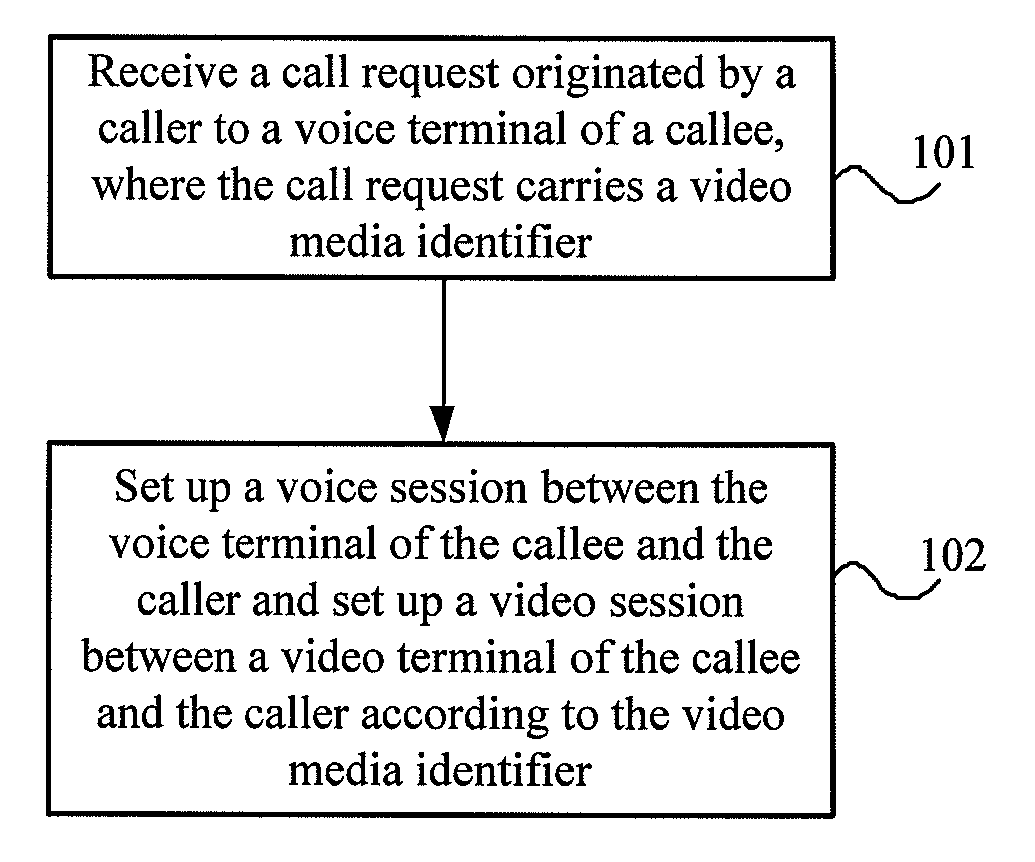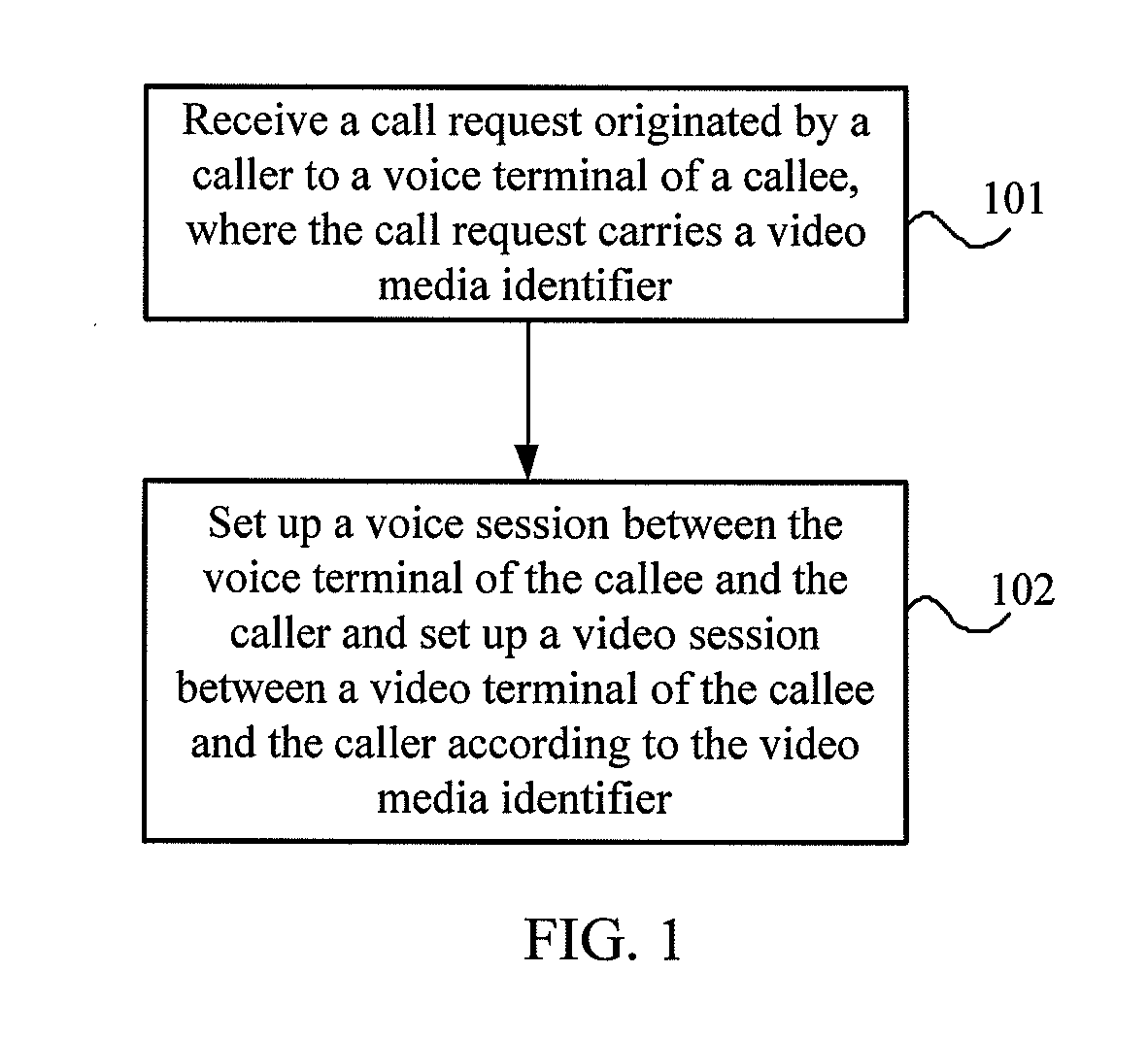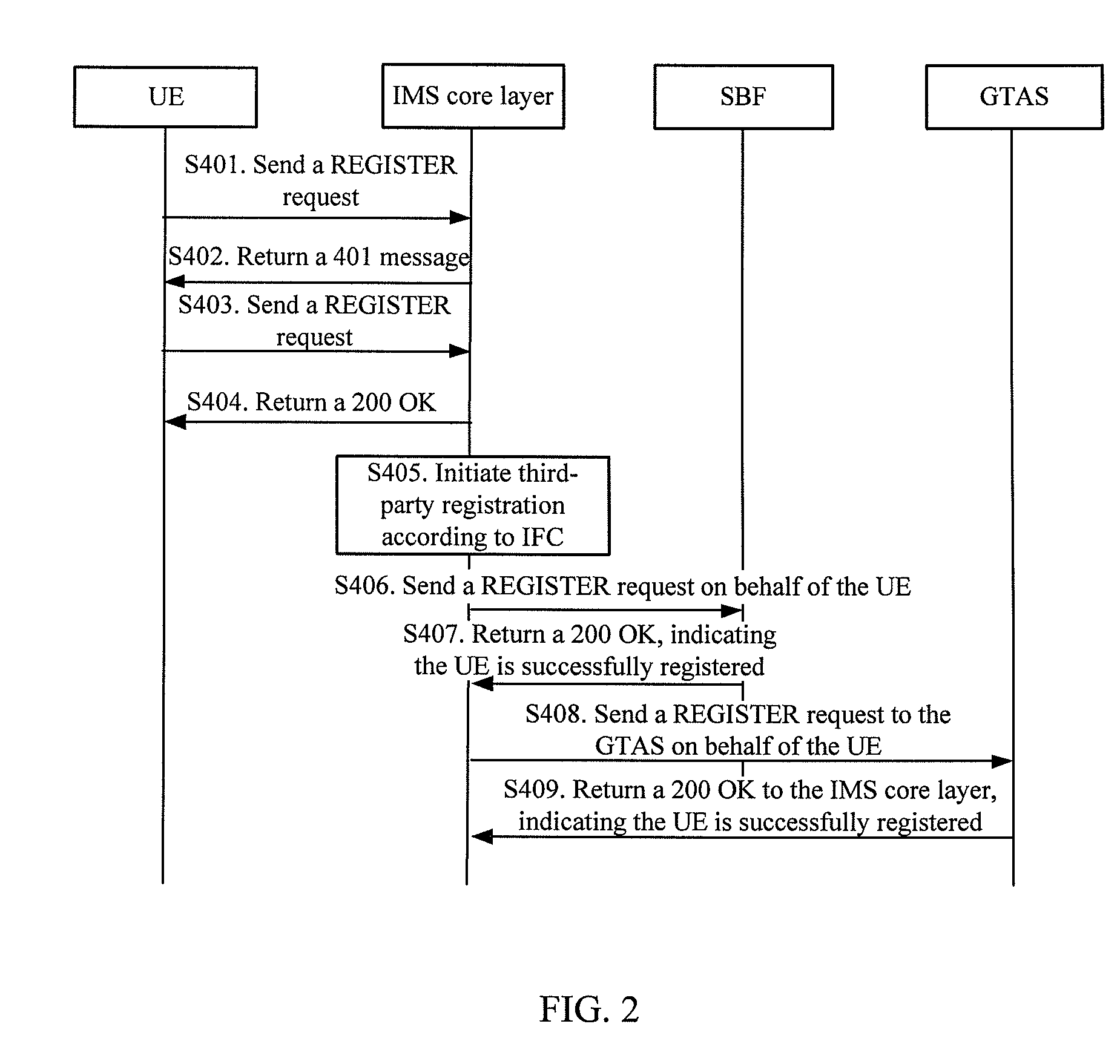Method, system and apparatus for multi-terminal communication
- Summary
- Abstract
- Description
- Claims
- Application Information
AI Technical Summary
Benefits of technology
Problems solved by technology
Method used
Image
Examples
first method embodiment
[0016]FIG. 1 shows the procedure of a computer-implemented method for multi-terminal communication according to the first embodiment of the disclosure. The method according to the first embodiment includes the following steps:
[0017]Step 101: Receive a call request originated by a caller to a voice terminal of a callee, where the call request carries a video media identifier.
[0018]Step 102: Set up a voice session between the voice terminal of the callee and the caller and set up a video session between a video terminal of the callee and the caller according to the video media identifier.
[0019]In the first embodiment, a Service Broker Function server (SBF) is adopted to set up sessions between the caller and multiple terminals of the callee respectively. Suppose the callee has an STB and a mobile phone. Then the SBF sets up a video session between the STB and the caller and sets up a voice session between the mobile phone and the caller. Therefore, it is unnecessary for data exchanged...
second method embodiment
[0020]To better explain the technical solution proposed by the first embodiment of the multi-terminal communication method, the second embodiment presents a life scenario, where the multiple terminals of the callee are an STB and a fixed telephone set. The scenario is presented to help explain the technical solution of the first embodiment of the multi-terminal communication method and not intended to limit the application of the method to only such a scenario.
[0021]Suppose the STB and fixed telephone set of user A are bound and the STB subscribes to the session status of the fixed telephone set which does not support video reception and display. When user B originates a video call request to the fixed telephone set of user A, user A answers the call and simultaneously, the TV screen displays video data coming from user B and asks whether to receive the video. User A chooses to receive the video and then talks with user B via the fixed telephone set and views the video from user B o...
fourth method embodiment
[0039]FIG. 4 is a signaling flow of a multi-terminal communication method based on IPTV in the second embodiment of the disclosure. In FIG. 4, the video terminal STB of the callee has already successfully subscribed with the SBF to the session status of the voice terminal of the callee bound with the STB. In the embodiment, the callee includes at least one voice terminal (such as a fixed telephone set, a PHS terminal and a mobile phone) and one video terminal (such as an STB). The procedure includes the following steps:
[0040]Step S601: A caller sends an INVITE message to the SBF, where the Session Description Protocol (SDP) 1 information in the INVITE message carries a video media identifier indicating that the caller is requesting an audio and video session. The SDP1 information also includes capability information of the caller, such as whether the caller supports the video session.
[0041]Step S602: Upon reception of the INVITE message from the caller, the SBF checks whether the SD...
PUM
 Login to View More
Login to View More Abstract
Description
Claims
Application Information
 Login to View More
Login to View More - R&D
- Intellectual Property
- Life Sciences
- Materials
- Tech Scout
- Unparalleled Data Quality
- Higher Quality Content
- 60% Fewer Hallucinations
Browse by: Latest US Patents, China's latest patents, Technical Efficacy Thesaurus, Application Domain, Technology Topic, Popular Technical Reports.
© 2025 PatSnap. All rights reserved.Legal|Privacy policy|Modern Slavery Act Transparency Statement|Sitemap|About US| Contact US: help@patsnap.com



